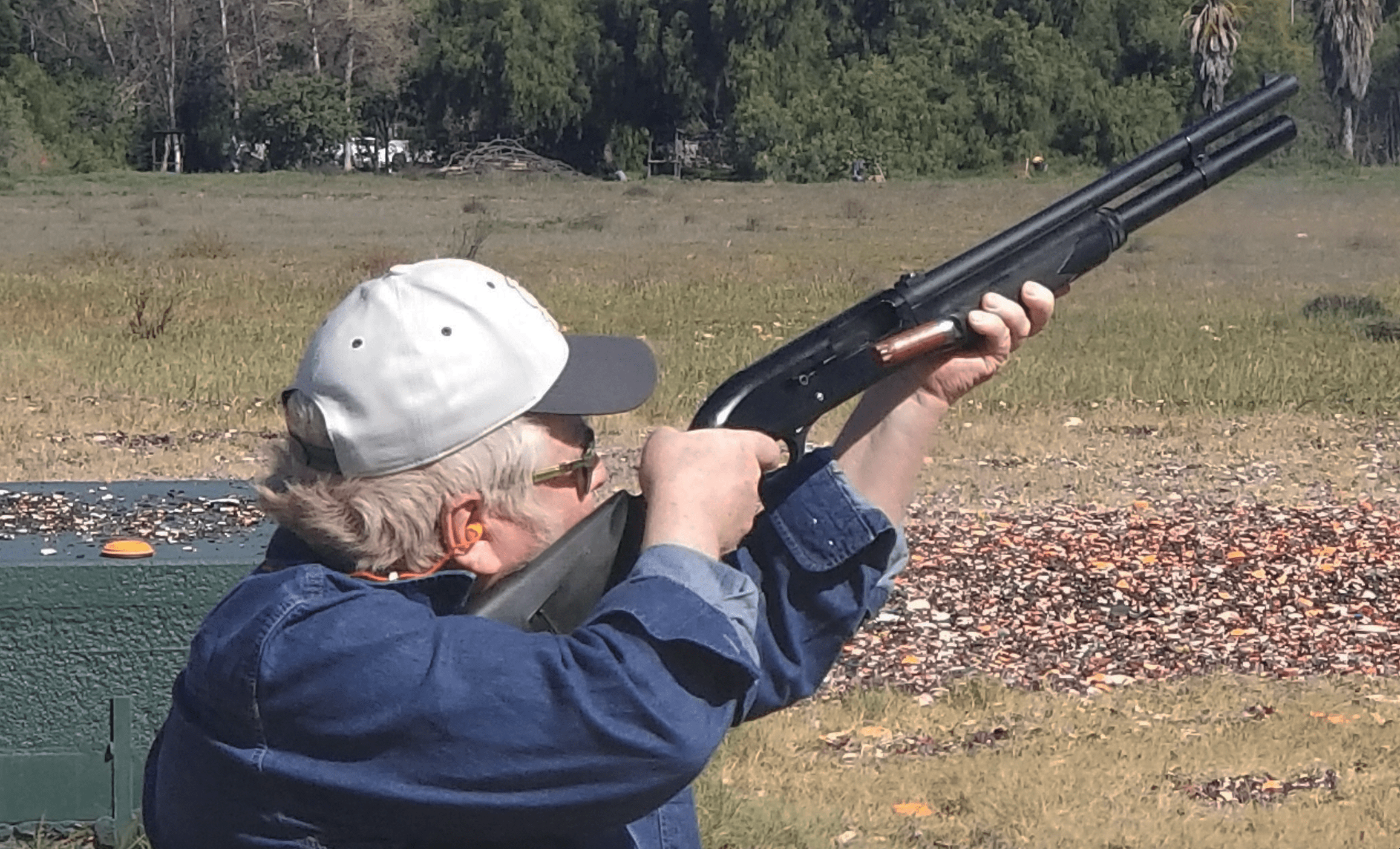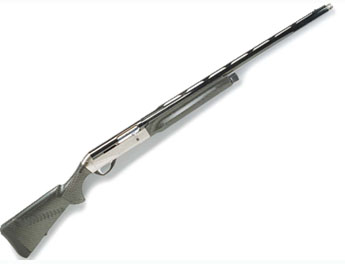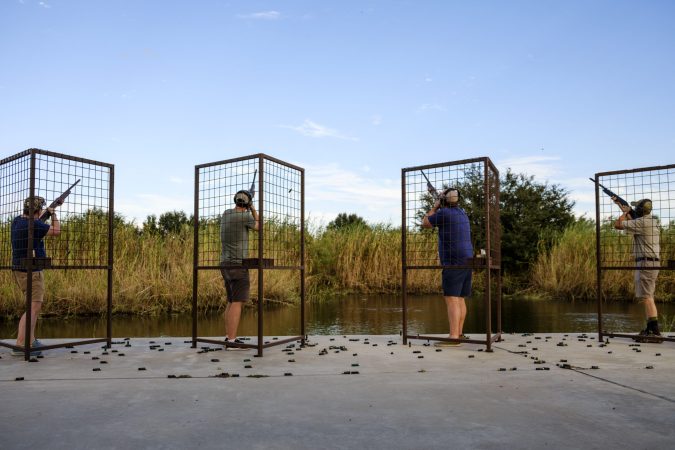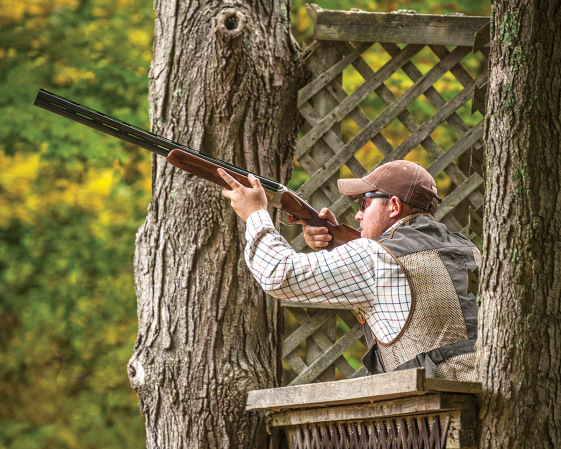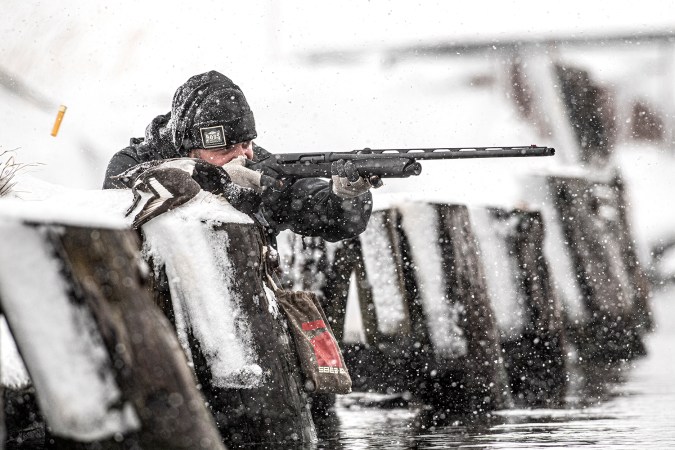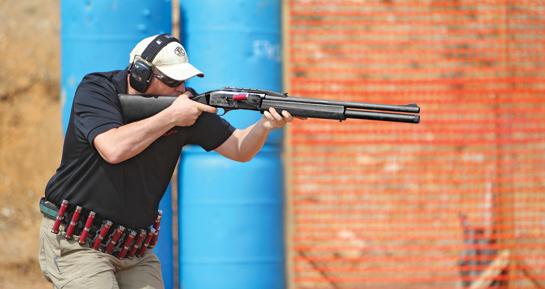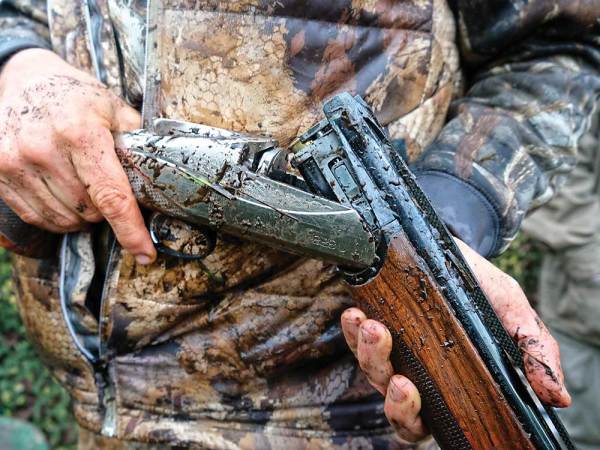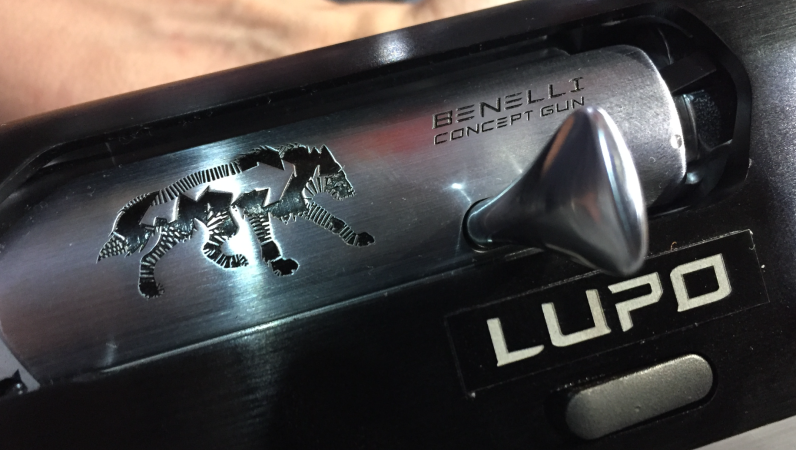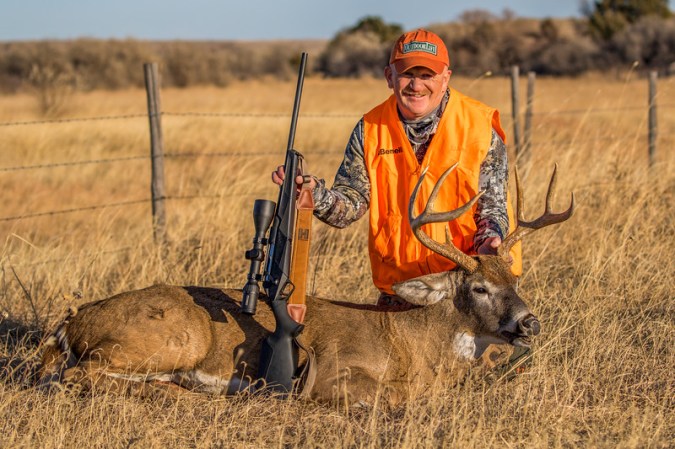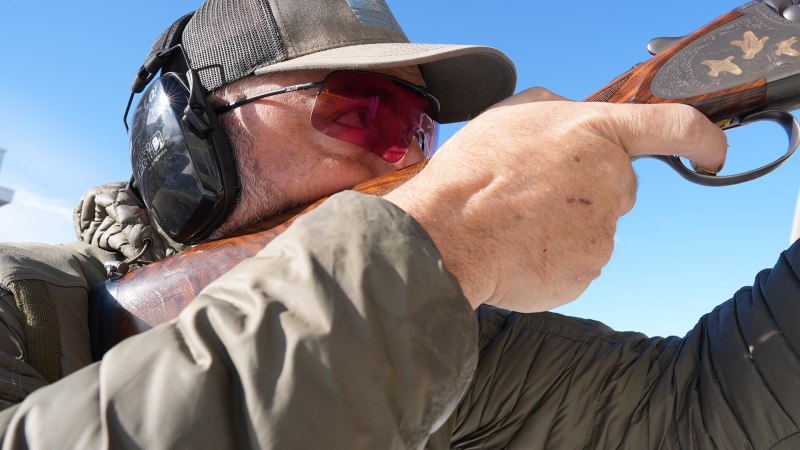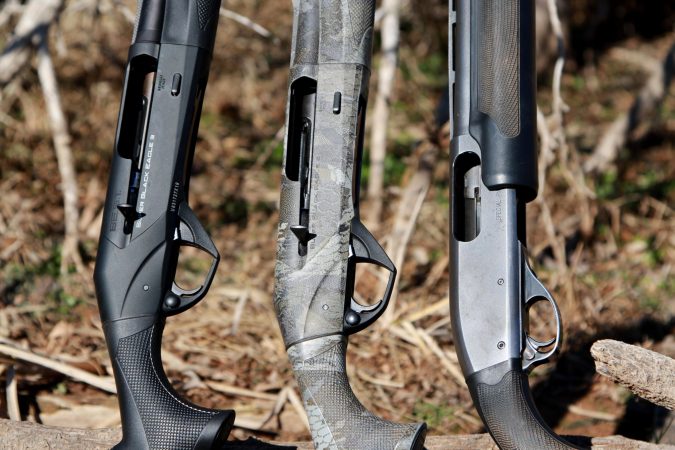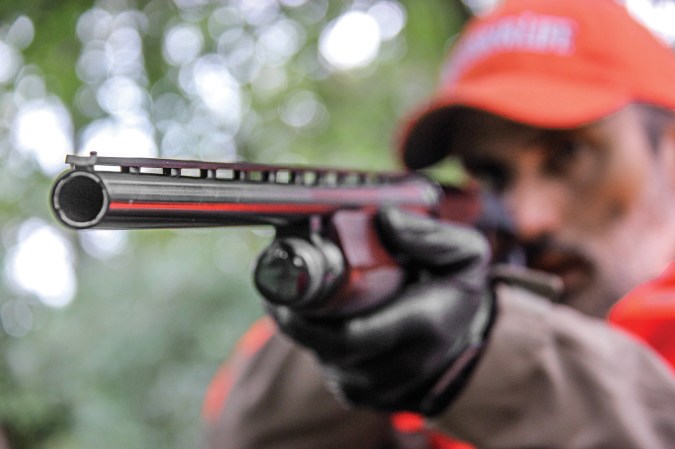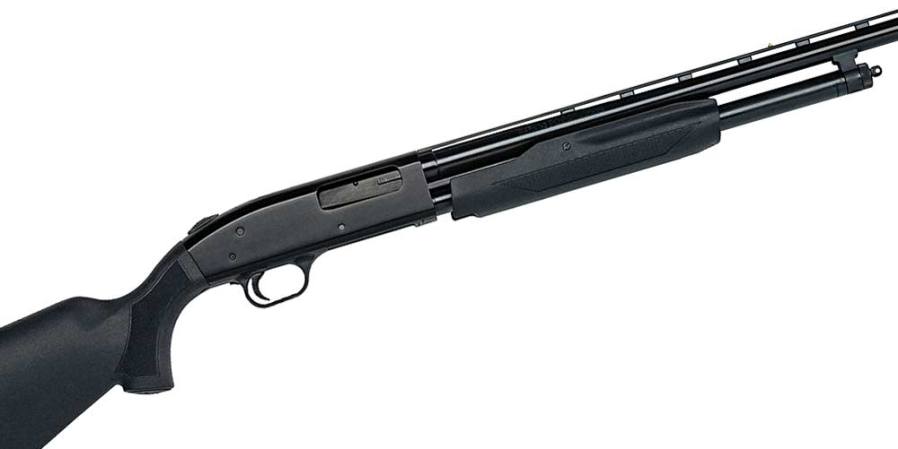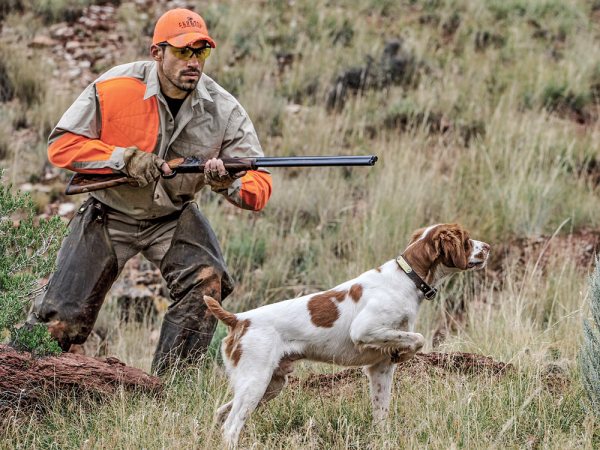We may earn revenue from the products available on this page and participate in affiliate programs. Learn More ›
Most people buy a tactical shotgun for its intended purpose—home defense. But the thing about shotguns is they are versatile. I’ve relied on a Benelli M1 Defense for all kinds of shooting since the early 1990s when Heckler and Koch began importing the inertia-driven shotguns from Italy to the U.S. It’s short stock and barrel fit nicely with my small frame (bigger shooters may struggle to shoot this gun accurately because most Defense models have a length of pull under 14 inches). And though it was not built with the intention of being a clays gun, it’s become my go-to skeet smoothbore.
Why I Shoot Skeet with an M1 Super 90
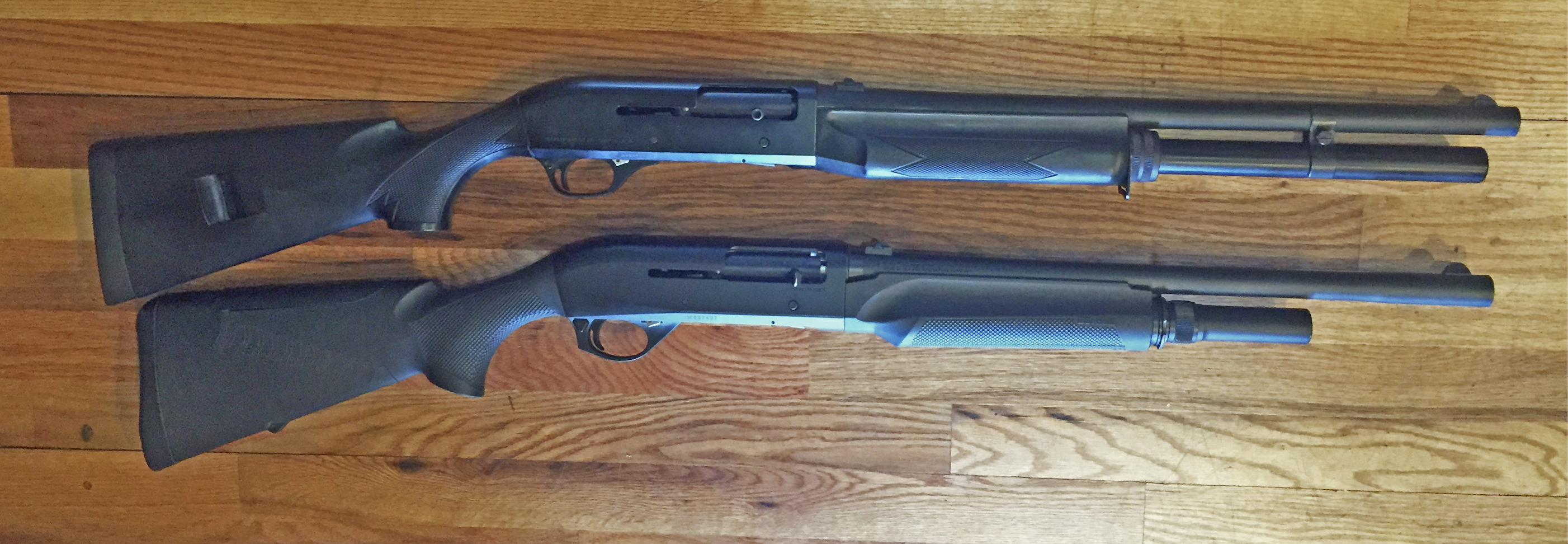
The Benelli M1 Super 90 auto-loader has gone through several permutations since it was introduced, some sporting, some tactical. So, a few words about my variant are in order. My M1 Defense was imported to Sterling, Virginia, prior to Benelli establishing itself in Accokeek, Maryland. A shooting buddy has an identical M1 Defense—a few years older than mine—that’s stamped “Heckler & Koch, Chantilly, VA” (the cities are roughly 11 miles apart). The Super 90 Series was produced from 1986 to 2005 and can still fetch a fair price (some are sold for upwards of $2,000).
The Defense is my all-time favorite skeet gun, but that doesn’t mean it’s the best choice for everyone. My shooting technique would drive an instructor batty. I shoot low gun, which means I keep the M1 near my belt before calling for a bird, mounting the gun, and pulling the trigger. I also spend a lot of time watching the bird before I mount. I’m incapable of the kind of lengthy swing, foot placement, and sustained lead that would win the approval of a competition skeet shooter.
I shoot very quickly and am lizard-brained about it. Whenever I’ve tried to slow down and consciously analyze lead, the results aren’t good. Once I start thinking about how many feet of lead I need to give the bird, I’ve already missed.
Also, I’m a snap shooter. It’s more fun for me that way. I don’t have the ambition or talent to break 100 straight and I’m OK with that. The gun is perfect for pass through shots because it’s well balanced, so I can get it moving fast, which I need to do because of my technique.
One of the great pleasures of shooting is getting good results with a gun that’s not designed for the task at hand. Long distance plinking with a 2-inch barreled J-Frame .38 is one example. Busting skeet with the Benelli Super 90 M1 Defense is another. There is a certain amount of satisfaction that comes from going shot-for-shot with someone shooting a Kreighoff K-80 or Beretta DT11.
If I lay off the coffee, I can often count on being one or two birds shy of a perfect 25. I’ve found the old Benelli to be exceptionally useful at stations 1, 7, and 8—shots that are incoming, straight-away, and straight up. But the curse of skeet is this: Once you’ve got a particular station wired—or think you do—you invariably fall apart somewhere else.
Why a Tactical Shotgun Works for Skeet
I didn’t find out the M1 was an ideal skeet gun until after taking a job in the Midwest. I only had room for so many guns when I moved, and the Super 90 made the cut. It turned out the guys I worked with shot skeet during our lunch break about twice a week. So, I ended up shooting the Benelli by default as it was the only shotgun I had. It looked out of place next to Browning Citoris, Remington 1100s, and the occasional Perazzi, but my M1 held its own. I’ve shot many perfect rounds with that ugly little gun while others dropped targets with beautiful over/unders.
The M1 has a 19.75-inch, fixed-choke cylinder bore barrel and full length seven-shot tubular magazine that rides just below it (the mag is only slightly shorter than the barrel). Later variants—such as the M2 Tactical—feature an 18.5-inch barrel; threaded for choke tubes. I like the slightly longer barrel of the Super 90, which also puts me in good graces at my local skeet club which stipulates all shotguns must have a barrel in excess of the legal limit (18 inches).
Measuring the choke diameter revealed a constriction of .723. That’s a bit on the open side for a sporting clays gun, but as a skeet gun .723 is right on spec. Skeet yardages range from 15 to 21 yards (though you will have to make a longer shot if you let the bird travel past the centerline).
My Super 90 has open rifle sights, as opposed to the trendier ghost-ring aperture and “eared” front sight. The low-profile open sights are easier to ignore when shooting skeet, and I have found them to be plenty accurate for slug placement at moderate distances.
Swap Out the Stock
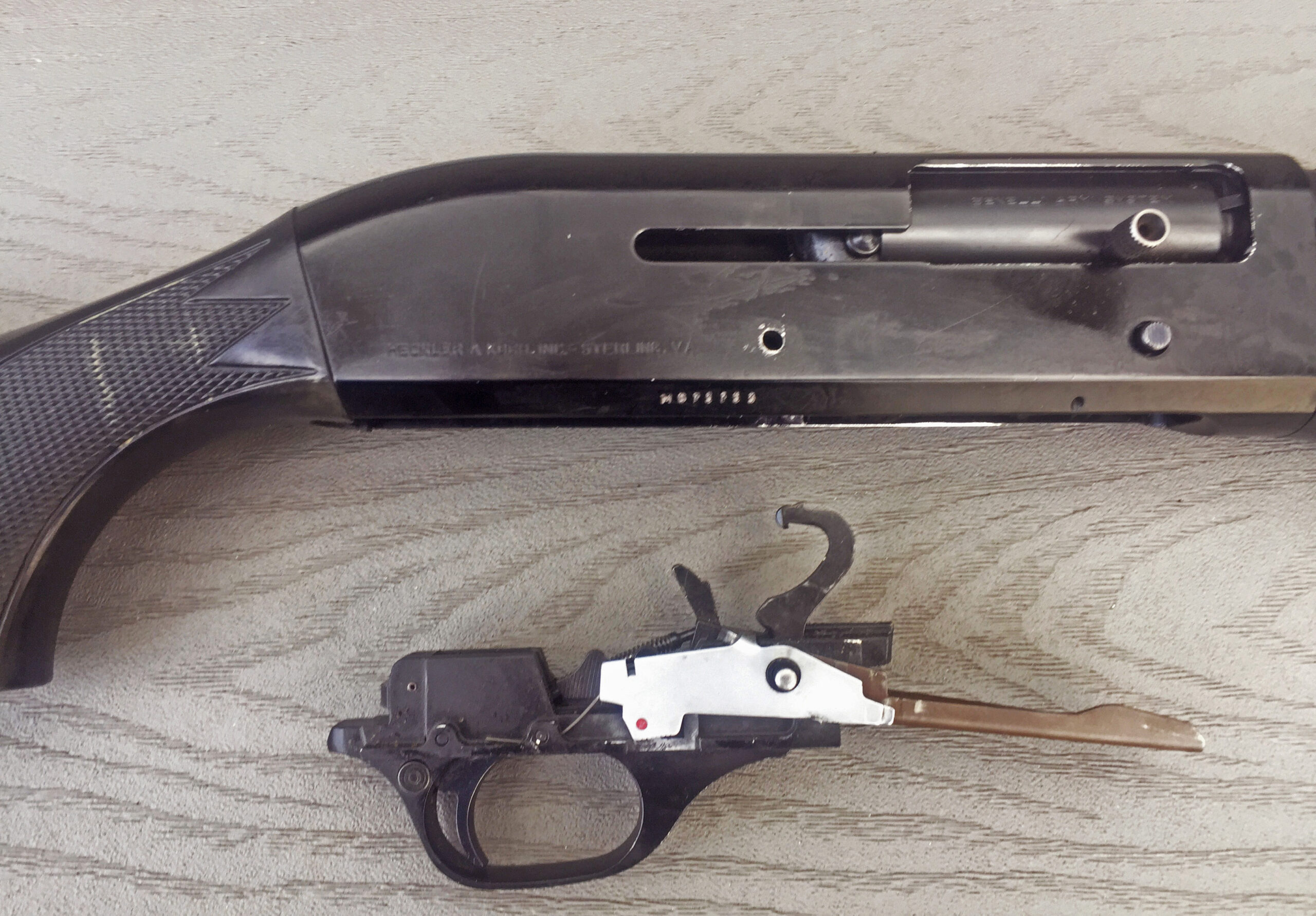
Originally, the M1 came with a black synthetic pistol-grip stock, which I replaced with a conventional model. Pistol grip stocks are fine for home defense or if you’re a turkey hunter, but they have no place in wingshooting or skeet. If you’re older or recoil sensitive (I’m both), you can swap the original stock for Benelli’s ComforTech. It has interlocking synthetic chevrons inside the stock that flex when you pull the trigger so less recoil is felt.
Since the M1 is an inertia-driven 12-gauge it does recoil a bit more than a gas-operated gun. But, you can shoot 1-ounce loads through it, which are manageable. And with an inertia gun, there is no carbon buildup like with gas guns, making cleaning much less of a chore. If you shoot skeet once or twice a week, cleaner inertia guns are a real plus.
One thing you should keep an eye on is powder residue buildup—burnt and unburnt—in the trigger group. I pull the trigger group for a flush and re-lube a few times per year. Other than that, cleaning and maintenance for any Benelli is mercifully simple.
The M1 Super 90 on the Pattern Board
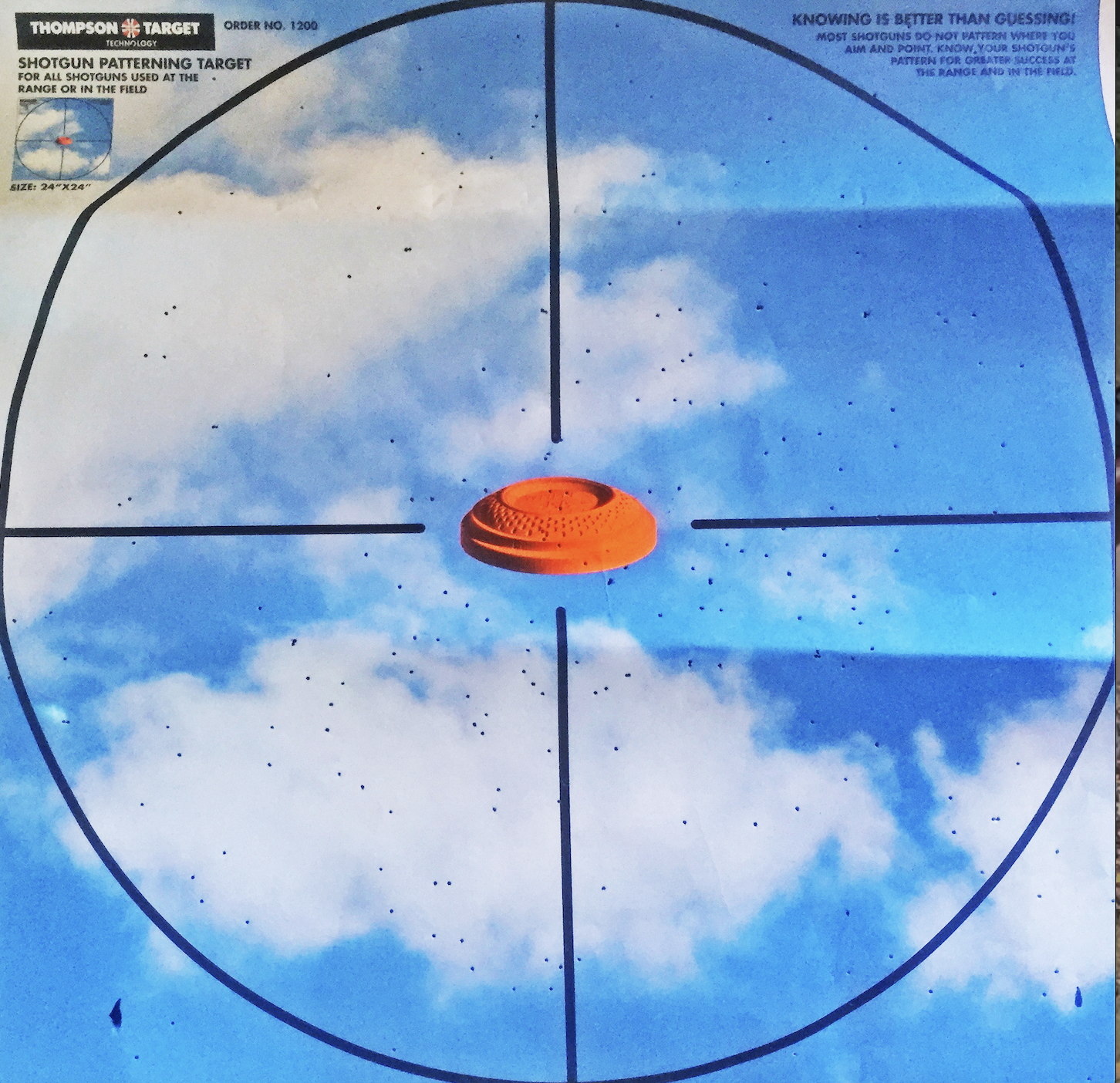
I’d never patterned the M1 before writing this story. It fit me well from the start, and I was always accurate with it, so there was never much need to. But in order to show you how well the gun shoots, I shot the M1 on paper.
Using Federal Field and Target 2¾-inch No. 7½s, I shot the M1 on a 24-inch Thompson Shotgun Patterning Target at 30 yards. Shooting a 1 1/8-ounce load (roughly 394 pellets), the M1 placed 120 pellets above the horizontal line and 106 below it (57 percent). That may not seem like an outstanding percentage, but remember I’m shooting a cylinder bore choke at 30 yards. Bringing the target just five yards closer, jumped the pattern percentage up to 71.
Read Next: 5 of the Best Trap Shotguns That Will Fit Every Shooter’s Budget
The M1 Is a Purpose-Built Home Defense Shotgun
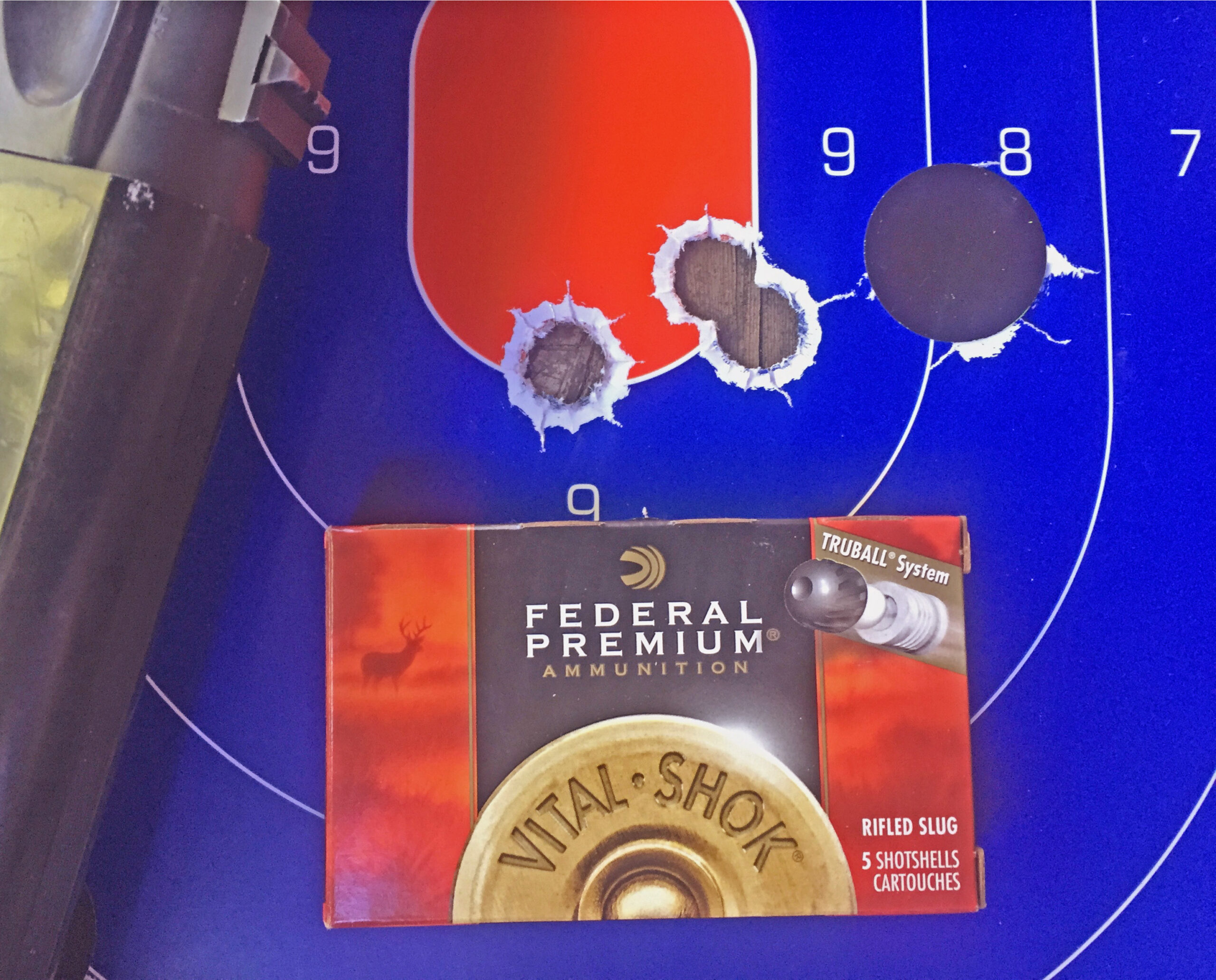
Skeet shooting aside, the M1 Super 90 Defense excels at what it was designed for. It delivered impressive accuracy at 25 yards with Federal’s TruBall 1-ounce slugs. It put three in a 1-inch cluster on a paper target. That black paster you see above and to the right of the slugs on the target above was used to cover the hole made by the wads. I also shot Sellier and Bellot’s 12-pellet 00 Buck Max. It was effective at the same yardage, placing 10 of the pellets inside a 12- by 18-inch silhouette target.
